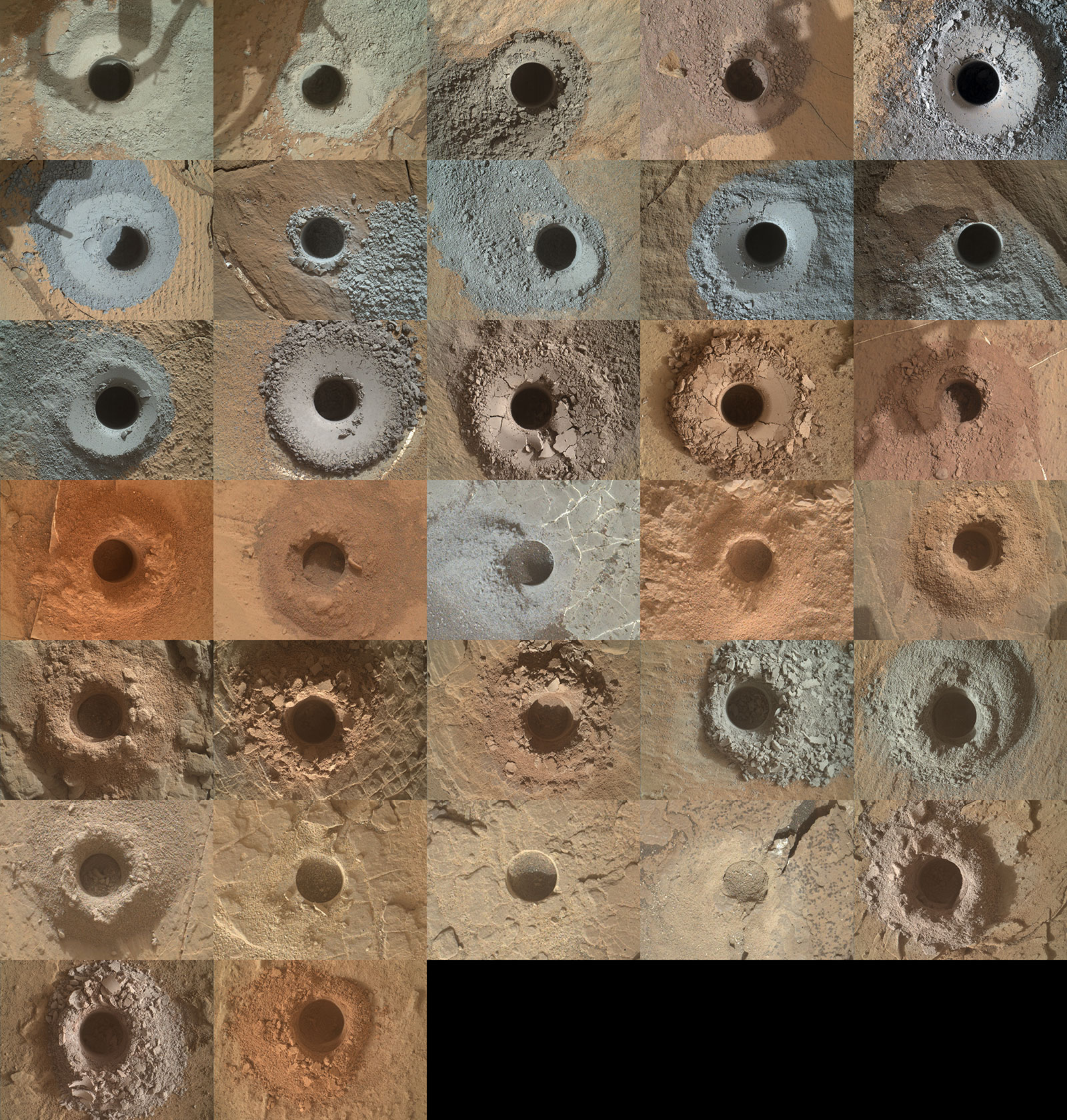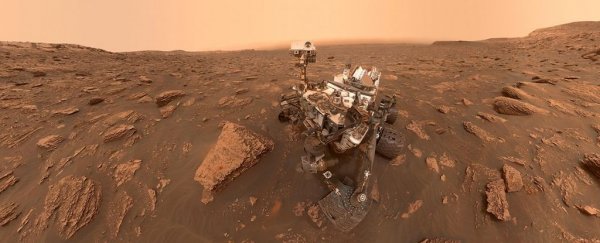Winter has cleared the air of dust on Mars, allowing the Curiosity Rover to take a stunning panorama of its alien surroundings.
On July 3, while rolling up the slope of Mount Sharp, a tall mountain in the center of the Gale Crater, Curiosity stopped to let its cameras sweep the scene.
The rover has now reached a height of roughly 460 meters (1,500 ft) above its landing site. From up here, you can see through the rover's 'eyes' all the way to the edge of the crater, more than 32 kilometers away (20 miles).
The 360-degree view, made up of 129 individual images, encompasses a variety of landscapes, including rippled volcanic sand, clay-rich rocks and sulfate-rich rocks - all of which hold secrets about how the red planet might have once lost its water.
For nine years, Curiosity has been exploring the varied terrain of Gale Crater, which some scientists suspect is a dried out lake bed, more than 3.5 billion years old. At its center, the peak of Aeolis Mons - also known as Mount Sharp - towers some 5.5 kilometers (18,000 ft) above the crater floor.
After a steady climb, the rover now stands at the transition between clay-rich rocks in the basin, which indicate a history of moisture, and salty minerals on the rim, which indicate drier conditions.
In the panorama, you can see the very spot where the rover collected its 32nd rock sample.
 The 32 rock samples to date, drilled for by NASA's Curiosity Mars rover. (NASA/JPL-Caltech/MSSS)
The 32 rock samples to date, drilled for by NASA's Curiosity Mars rover. (NASA/JPL-Caltech/MSSS)
"The rocks here will begin to tell us how this once-wet planet changed into the dry Mars of today, and how long habitable environments persisted even after that happened," explains Abigail Fraeman, Curiosity's deputy project leader at NASA.
In a tour of the panorama, Fraeman points out a blanket of knobbly, sulfate-rich rocks, which she and her colleagues suspect were created by flowing groundwater.
She also zooms in on a series of hills higher up, which appear far more rounded than other ridges seen in the crater. This suggests they were eroded in different ways, which requires further investigation.

Soon enough, Curiosity will stand in the valley beneath one rounded hill as tall as a four-story building. Fraeman anticipates some great images and even more rock samples will be collected there.
Analyzing the chemicals and minerals found in Martian rocks can reveal important clues about how this ancient environment could have dried up, and whether, at any point, there was enough water to support microbial life. We can't wait to learn more.
